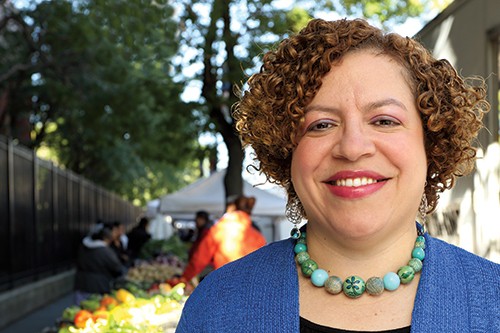
When Lorena Drago, MS, RD, CDN, CDE, first arrived in the U.S. from Colombia, she found that her work with Hispanic clients introduced her to vastly different cultures and diets, but the educational tools available to address these differences were few. "I needed to tailor the message to different Hispanic sub-groups, and I also realized that other health-care professionals needed to become familiar with traditional Latin American foods and dietary practices." Today, Drago, senior associate director for the Lincoln Hospital Ambulatory Care Nutrition and Diabetes Education Center of Excellence in New York City, has made a career of tailoring culturally and ethnically oriented nutrition and diabetes education programs.
What inspired you to undertake this work?
When I arrived in the United States, the materials that were available in Spanish included mostly traditional Mexican foods. I remember one patient saying to me, “I don’t eat tacos and enchiladas. I am Puerto Rican. I eat rice and beans.” I realized that just translating educational tools into Spanish was not enough, so I created teaching tools to help counsel clients more effectively.
Tell us about some of these teaching tools.
I developed the Nutriportion™ Measuring Cups that have the calorie and carbohydrate amounts of common foods embossed on each cup in English and Spanish. So instead of telling the patient to remember that a cup of cooked rice has 45 grams of carbohydrates, he just has to read the information on the cup. I also created the Nutriportion™ Hispanic Food Cards with pictures and the nutrition composition of common Hispanic foods. Dietetic professionals can use these to teach Hispanic clients about meal-planning strategies.
What are some other initiatives or programs you've worked on?
I developed a diabetes education initiative that focused on teaching patients self-management skills using their “downtime” in physician waiting rooms. The program was welcomed as a poster presentation at the 2008 National Hispanic Medical Association Annual Meeting in Washington, D.C.
I co-wrote a successful grant for the Labels for Health program. The program’s mission was to instruct patients on how to accurately read and analyze food labels. I've also developed educational materials used in the community. I, in collaboration with the NYC Department of Health’s Healthy Bodegas Initiative, helps people with diabetes shop in their neighborhood food markets with in-hand information.
And I developed a curriculum, Go Food Shopping with a Latina Diabetes Nutrition Expert — a supermarket tour focused on teaching Latinos with pre-diabetes and diabetes how to purchase and prepare traditional foods to prevent or manage diabetes.
How has your work made a difference in your community?
The people in the community make the change. My role is to facilitate the process, but the patients and clients have to do the harder work. I use the traditional evaluation methods, but I believe that the moments when patients’ lives are transformed because they are able to implement healthier behaviors says more to me that looking at aggregate data.
What kind of feedback have you received?
I am always tickled when I receive comments about what patients have found to be useful. For example, I met a woman who told me that she bought my book, Beyond Rice and Beans, for her father, and that he was following the tips religiously. He had never seen a dietitian or a diabetes educator, but he found the book to be helpful.
What do you find most rewarding about your efforts?
I want to be able to provide content that fits the client’s life and culture, not the other way around. I like to focus on what is possible and practical and not just what is optimal. So, when I hear patients say, “I think I can do this,” then I feel that I have provided the right tools for the patient.
